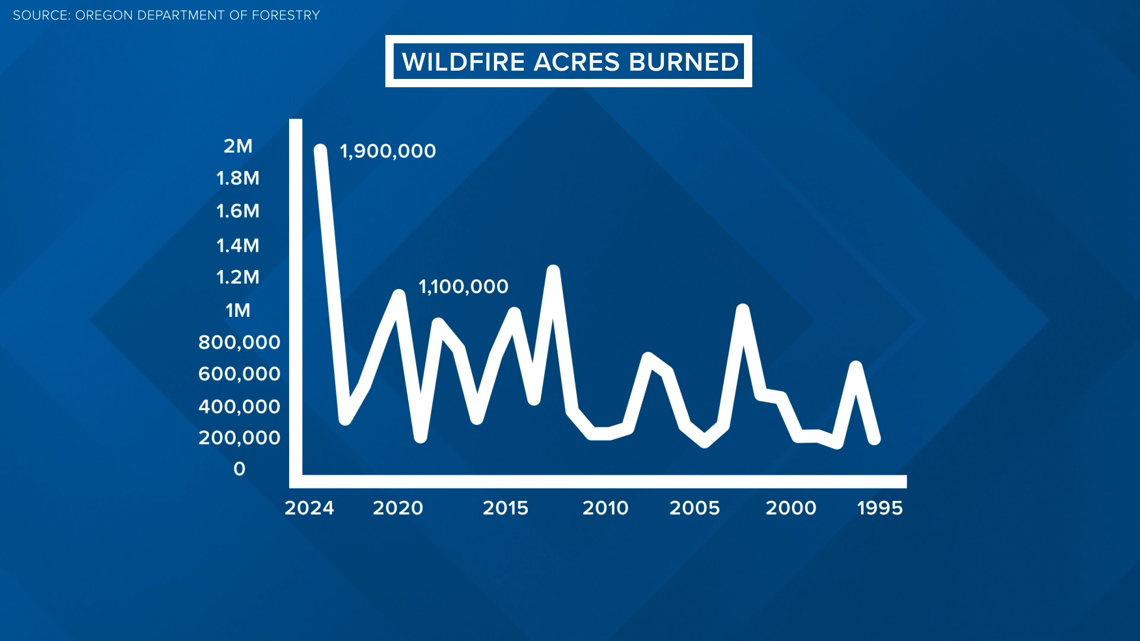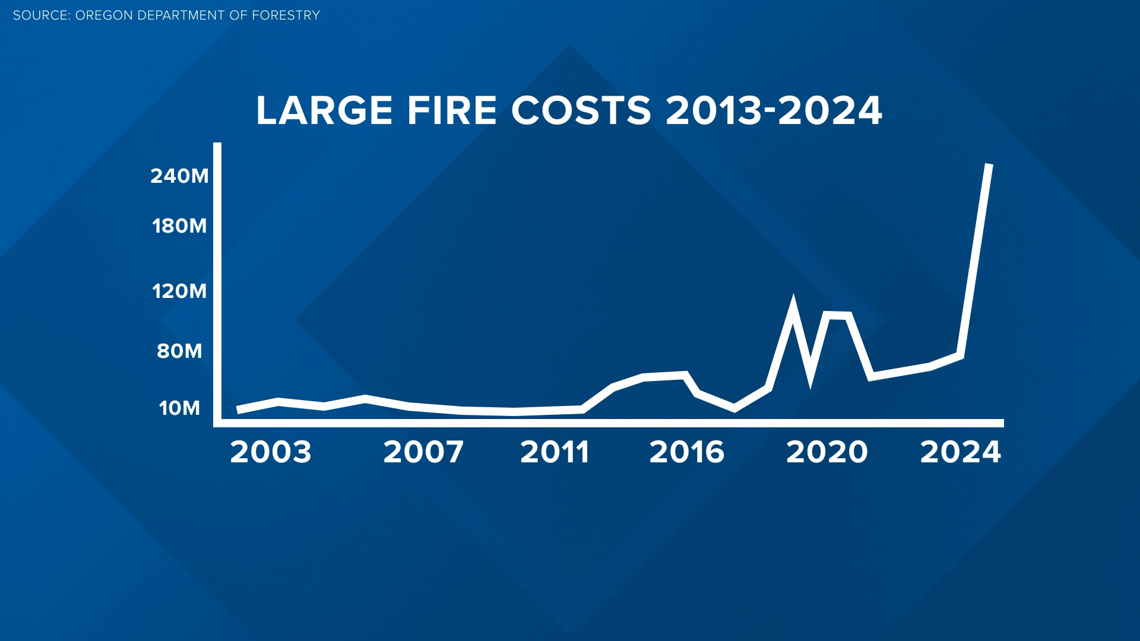PORTLAND, Ore. — The Oregon Department of Forestry needs emergency funding to pay for the most expensive wildfire season in state history, with record-high costs of $250 million and counting.
As of mid-September, more than 1.9 million acres of land had burned across Oregon — nearly double the acreage burned in the notorious 2020 wildfire season, and far above any other year in ODF's recorded history.
"The scale ... people have to see it to understand just how many acres burned across the state this summer," said Kyle Williams, ODF's deputy director for fire operations. "Just because the smoke wasn't present in our more populated areas doesn't mean that (wildfires) weren't deeply impactful."
ODF has now exhausted its funds. In order to pay firefighters and contractors, the department is returning to its usual process of acquiring more money from the state — except this time, it may not be enough.


Outside of the legislative session, agencies turn to Oregon's Emergency Board. Staffed by the Legislative Fiscal Office, the E-Board allocates emergency funds to keep things afloat until lawmakers return. Dozens of state agencies submit requests every few months.
ODF is asking for $47.5 million from the E-Board this September, including a request for $40 million from the board's general fund.
The E-Board currently has just $43 million in its general fund. If wildfire costs get priority, as they have historically, that strains the budget for any other emergency needs.
"In those E-Board requests there are a lot of really important priorities for other agencies, for other Oregonians, right, not impacted by fire," Williams said, recognizing ODF's outsized impact on the board.
The E-Board will decide its allocations on Thursday, September 26, and the LFO recommends that the board pay the $47.5 million to ODF, albeit with a slight workaround: using $20 million from the board's general fund and $20 million from a separate special allocation reserved for natural disaster emergencies.
However, in its analysis, the Legislative Fiscal Office says the Oregon Department of Forestry will need much more than $47.5 million in the coming months, even if ODF receives that funding amount.
"Cash projections received from the department indicate insolvency in November 2024 and an estimated shortfall of $28.9 million by the beginning of December, growing to $54 million by the start of January 2025," the LFO analyst wrote.
The analysis noted that ODF will receive a payroll loan from the Department of Administrative Services to cover payroll through the end of the year. Plus, the department is looking to delay payments to federal partners.
Still, ODF may need to work Oregon's executive branch and the state treasury for another loan to keep the agency "solvent long enough" before another request to the E-Board in December, the analyst wrote.
Williams said he's confident all parties will work out the funding and firefighters and others will get paid.
"We will pay our vendors, we will take care of our firefighters, I have no doubt in my mind," Williams said.
With wildfire costs mounting each year, KGW asked Williams if the funding process is sustainable.
"It sure is challenging," he said, after pausing for multiple seconds.
From 2002 to 2012, gross wildfire costs in Oregon averaged around $11 million a year. From 2014 to 2024, gross costs have surged to an average of $75.5 million a year.


Three of the last five years (2020, 2021 and 2024) have eclipsed costs of $120 million, with 2024's figure of $250 million and rising seen as a wake-up call for the state.
"I would like to think that future fire seasons won't be quite at this scale, but I think the statistics tell me that's probably not going to be accurate," Williams said. "The conditions we've got on the landscape are going to drive us to a place we haven't been before."
Climate change and other factors have contributed to a significant increase in the number burned acres, and as a result, surging costs to fight the fires.
"The competition for resources that this scale of fire drives makes them really scarce and hard to be able to get, and in order for those vendors to be able to contribute they have to be able to pay their people," Williams said. "We have to be able to pay our people."
The Oregon Department of the State Fire Marshal is directing a workgroup that's looking at new ways to pay for fighting wildfires in the years to come. Details on potential solutions have yet to be released.
"Our model is really effective at putting fires out, but our financial model is one that we've relied on for the better part of 100 years," Williams said, addressing a potential need for change. "This might be our new normal in terms of the scale of fire we see across the landscape."

